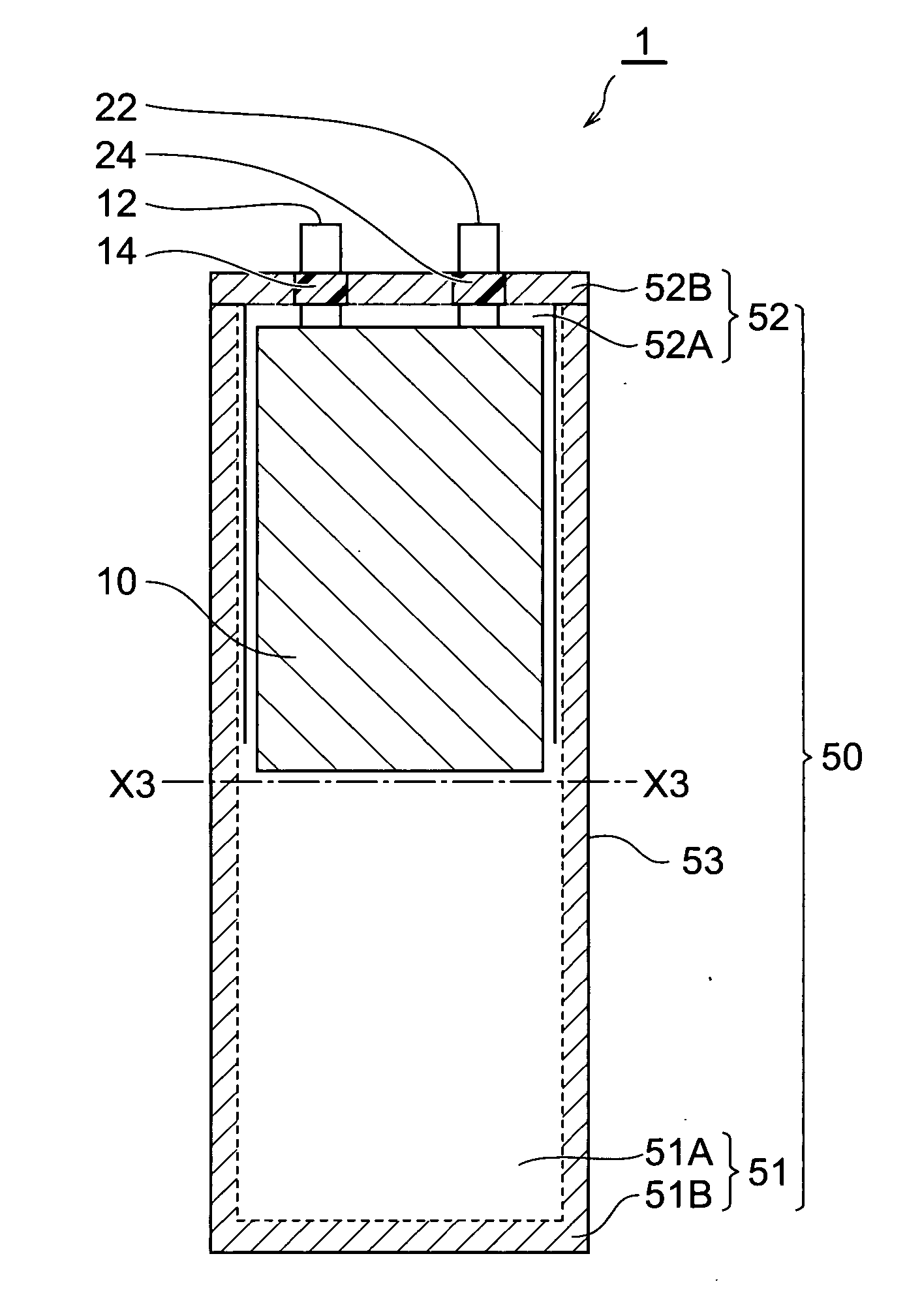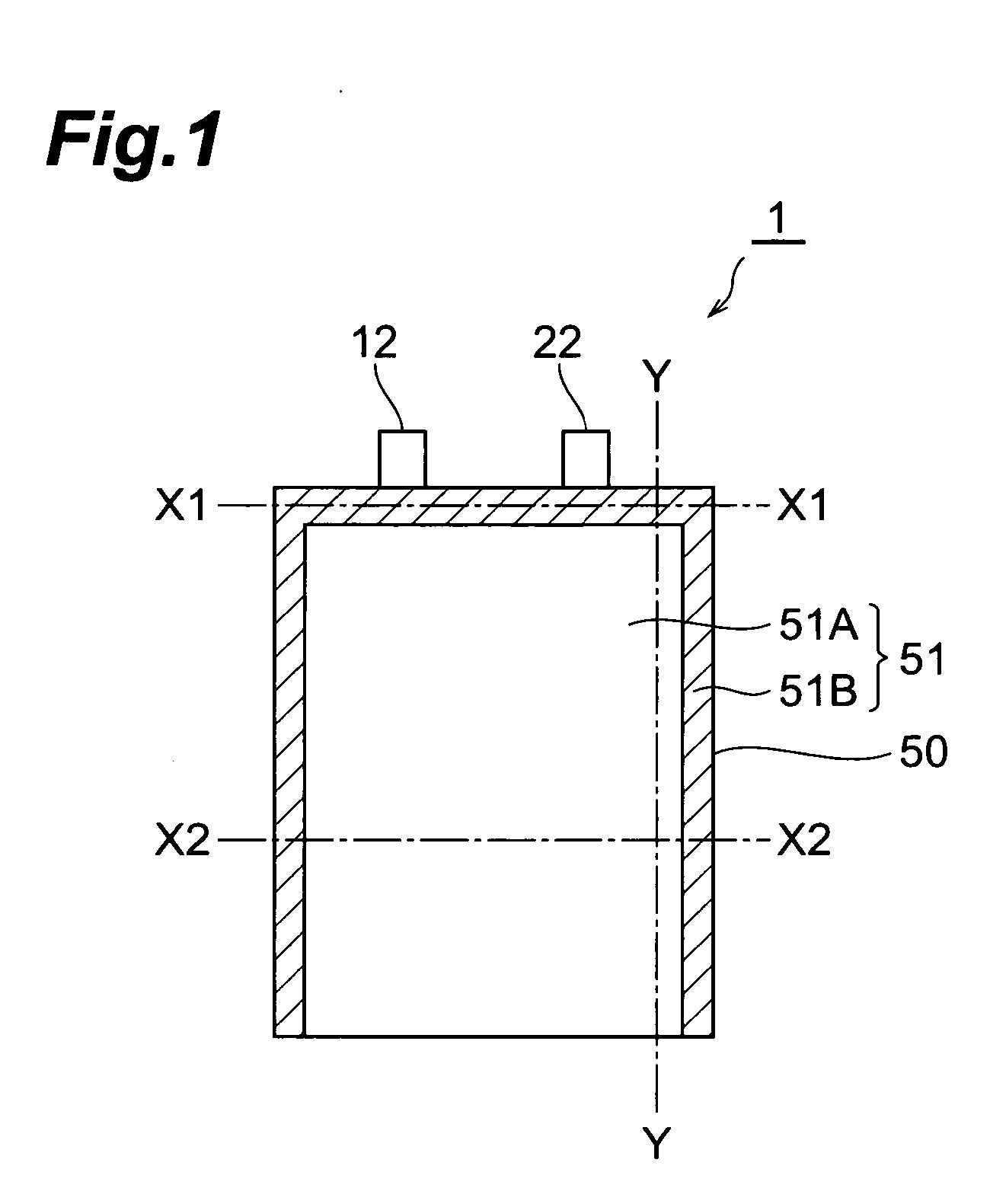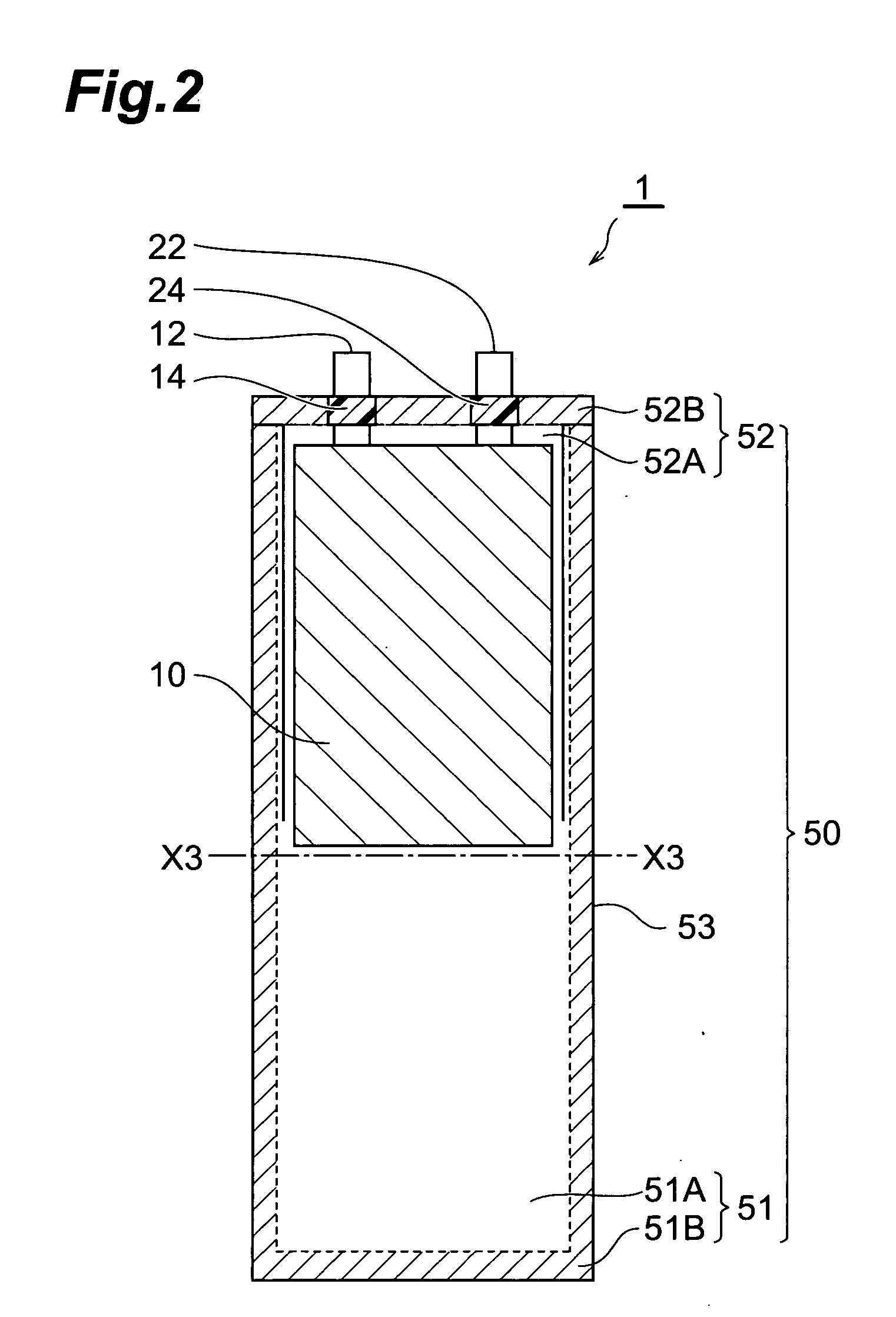Method for producing electrode for electrochemical capacitor, method for producing electrochemical capacitor and porous particle with solvent used in such methods
a technology of electrochemical capacitors and electrodes, which is applied in the direction of fixed capacitors, variable capacitors, fixed capacitor details, etc., can solve the problems of insufficient electrodes, insufficient charging/discharging characteristics, and insufficient reduction of contact resistance, so as to achieve excellent charging/discharging characteristics, the effect of easy and reliable formation
- Summary
- Abstract
- Description
- Claims
- Application Information
AI Technical Summary
Benefits of technology
Problems solved by technology
Method used
Image
Examples
example 1
[0114] In the following procedure, an electrochemical capacitor (electric double layer capacitor) having the same configuration as with the electrochemical capacitor shown in FIG. 1 was made.
[0115] (1) Making of Electrode
[0116] An anode (polarizable electrode) and a cathode (polarizable electrode) each having an electrode area of 16.5 cm2 was made by the following procedure. First, particles made of spherical activated carbon (product name “BP20” manufactured by Kuraray Chemical Co., Ltd.) were subjected to absorption processing. Propylene carbonate (hereinafter referred to as “PC”) was employed as a liquid used for the absorption processing.
[0117] Subsequently, a binder [fluorine resin (product name “Viton-GF” manufactured by DuPont)], a conductive auxiliary agent (acetylene black), and MIBK (methylisobutylketone) which was a solvent adapted to dissolve the binder were put into the liquid containing activated carbon remaining after the absorption processing, and they were stirre...
example 2
[0128] An electrochemical capacitor was made by the same procedure under the same condition as with the electrochemical capacitor of Example 1 except that the content of the absorption processing liquid contained in the electrode forming coating liquid was adjusted as shown in FIG. 20.
example 3
[0129] An electrochemical capacitor was made by the same procedure under the same condition as with the electrochemical capacitor of Example 1 except that particles made of fibrous activated carbon (product name “FR25” manufactured by Kuraray Chemical Co., Ltd.) were employed in place of the particles made of spherical activated carbon “BP20” used in Example 1 and that the content of the absorption processing liquid contained in the electrode forming coating liquid was regulated as shown in FIG. 20.
PUM
| Property | Measurement | Unit |
|---|---|---|
| specific surface area | aaaaa | aaaaa |
| volume | aaaaa | aaaaa |
| volume | aaaaa | aaaaa |
Abstract
Description
Claims
Application Information
 Login to View More
Login to View More - R&D
- Intellectual Property
- Life Sciences
- Materials
- Tech Scout
- Unparalleled Data Quality
- Higher Quality Content
- 60% Fewer Hallucinations
Browse by: Latest US Patents, China's latest patents, Technical Efficacy Thesaurus, Application Domain, Technology Topic, Popular Technical Reports.
© 2025 PatSnap. All rights reserved.Legal|Privacy policy|Modern Slavery Act Transparency Statement|Sitemap|About US| Contact US: help@patsnap.com



